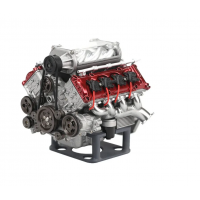Reference: 9999999999-23
Brand: Extra delivery charges
99999999999-extracharge-23.51
Extra charge for the difference
Filter By
Availability
Availability
Brand
Brand
Price
Price
€428.00 - €9,787.00
Reference: 9999999999-23
Brand: Extra delivery charges
Extra charge for the difference
Reference: 2133208000
Brand: SsangYong
insulator-module lwr
Reference: 2133208000
Brand: SsangYong
insulator-module lwr

Motor vehicle engines are the heart of any vehicle, converting fuel into mechanical power that propels the vehicle forward. These engines come in various designs and configurations, each with its unique advantages and suited for different types of vehicles and purposes. Here’s an overview:
1. **Internal Combustion Engines (ICE)**: The most common type, ICEs burn fuel internally to create an explosion in a combustion chamber. The force from this explosion pushes pistons, turning the crankshaft and creating the motion needed to drive the vehicle. These engines primarily use gasoline or diesel.
2. **Electric Engines (Motors)**: Electric vehicles (EVs) use electric motors that convert electrical energy from batteries or a fuel cell into mechanical energy. These engines are known for their efficiency, instant torque, and silent operation.
3. **Hybrid Engines**: Combining an internal combustion engine with an electric motor, hybrid engines can switch between or combine both power sources to increase fuel efficiency and reduce emissions. They recharge their batteries through regenerative braking and the combustion engine, eliminating the need for external charging.
4. **Turbocharged and Supercharged Engines**: These engines use a turbocharger or supercharger to force more air into the combustion chamber, increasing the amount of fuel that can be burned and thus the power output without significantly increasing engine size.
5. **Rotary Engines (Wankel Engines)**: Known for their compact and lightweight design, rotary engines use a rotary design to convert pressure into rotating motion. While less common, they are appreciated for their smooth operation and high power-to-weight ratio.
6. **V-Type, Inline, and Flat Engines**: These terms refer to the configuration of the cylinders in the engine. V-type engines have cylinders arranged in a V shape, inline engines have all cylinders arranged in a single straight line, and flat (or boxer) engines have cylinders arranged in opposing pairs.
**Performance Factors**:
- **Power Output**: Measured in horsepower or kilowatts, indicating the engine's ability to perform work over time.
- **Torque**: Reflects the engine's ability to generate rotational force, important for towing and acceleration.
- **Fuel Efficiency**: Indicates how effectively the engine converts fuel into energy, an essential factor for operational cost and environmental impact.
- **Emissions**: The level of pollutants produced by the engine, with stricter regulations pushing for cleaner engines.
Maintaining vehicle engines involves regular checks and services, including oil changes, filter replacements, and monitoring for any signs of wear or failure. Advances in technology continue to improve engine efficiency, power, and environmental friendliness, playing a crucial role in the evolution of transportation.
There are 2483 products.